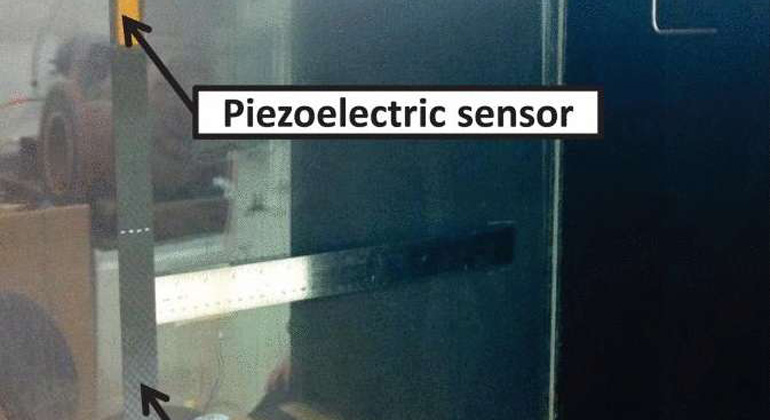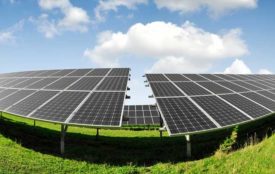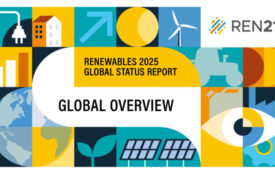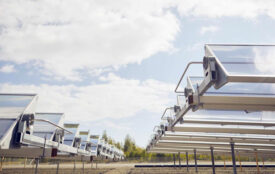Scientists harvest energy from beam’s self-induced, self-sustaining vibrations in airflow
In an attempt to harvest the kinetic energy of airflow, researchers have demonstrated the ability to harvest energy directly from the vibrations of a flexible, piezoelectric beam placed in a wind tunnel.
While the general approach to harvesting energy from these “aeroelastic” vibrations is to attach the beam to a secondary vibrating structure, such as a wing section, the new design eliminates the need for the secondary vibrating structure because the beam is designed so that it produces self-induced and self-sustaining vibrations. As a result, the new system can be made very small, which increases its efficiency and makes it more practical for applications, such as self-powered sensors.
The researchers, Mohamed Y. Zakaria, Mohammad Y. Al-Haik, and Muhammad R. Hajj from the Center for Energy Harvesting Materials and Systems at Virginia Tech, have published a paper on the new energy-harvesting method in a recent issue of Applied Physics Letters.
“The greatest significance of the work is the reduction of the volume of the harvester, which translates to an increase in the power density, by eliminating the need for a secondary structure to be attached to the beam,” Zakaria said. “This reduction is important in the design of very small harvesters that can be used to develop self-powered sensors.”
The research shows that subjecting a flexible beam to wind at the right angle of attack can cause the beam to bend so much that the beam’s “flutter speed” is significantly reduced. A large degree of bending also induces a change in the beam’s natural frequencies that basically results in a synchronization of the beam’s bending and twisting frequencies. Specifically, the beam’s second bending frequency and torsional frequency coalesce, resulting in “self-induced flutter” of the beam. Complex aerodynamic effects ensure that the vibrations are self-sustaining, allowing for continuous energy harvesting.
The researchers demonstrated the design using a flexible cantilever beam with a piezoelectric transducer, which they hung from the ceiling in a wind tunnel. They found that the amount of energy harvested depends on a combination of factors, including the wind speed and the angle at which the wind hits the beam. At a wind speed of 10 m/s and 5.4° angle, the method can harvest approximately 0.3 mW of power. Although the researchers plan to improve the power levels, even this small value can be used to power individual sensors, which, as Zakaria explained, have a wide variety of applications.
“Future monitoring of different systems and platforms such as air and water systems, structures, vehicles, infrastructure, etc., as well as secure data transmission and reception from these sensors, will require the use of hundreds or thousands of sensors, data loggers and hardware components,” Zakaria said. “The ability to integrate energy harvesters within these sensors or data loggers to develop such self-powered instruments is very much needed to enable their use without the need to replace batteries on a regular basis.”
In the future, the researchers plan to design even smaller beams with specific geometries and capabilities, as well as to improve the performance of the piezoelectric elements.
- Explore further:Shake, rattle and … power up? A new MEMS device generates energy from small vibrations
- More information: Mohamed Y. Zakaria, et al. “Experimental analysis of energy harvesting from self-induced flutter of a composite beam.” Applied Physics Letters. DOI: 10.1063/1.4926876
- Journal reference:Applied Physics Letters








